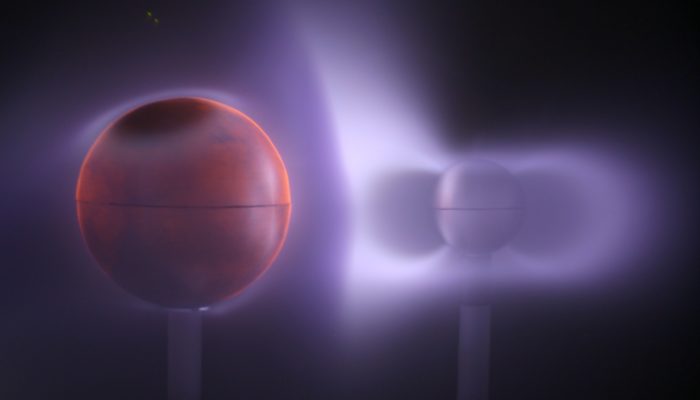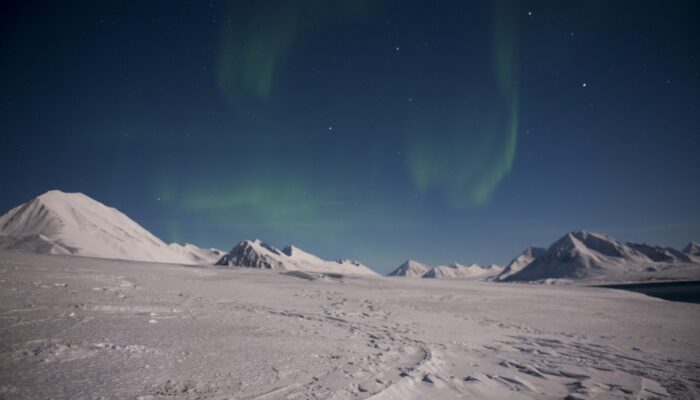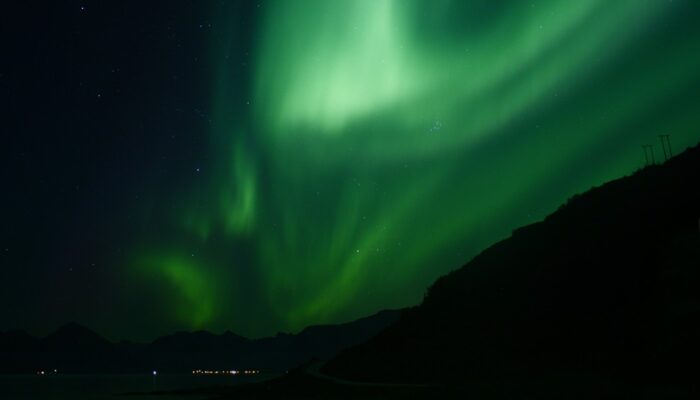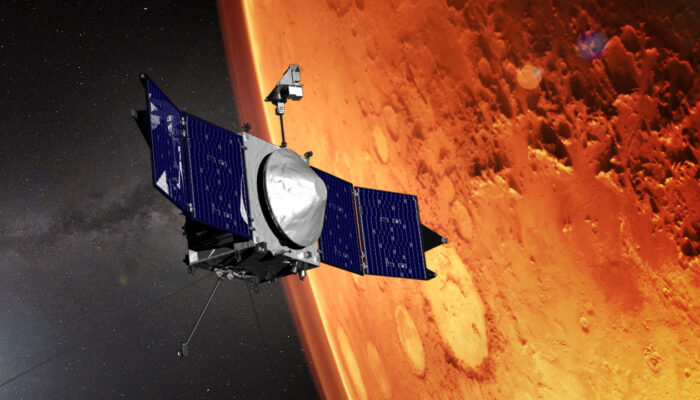One of the realities of studying the Earth, planetary or space sciences is that we are attempting to observe an experiment that has been in progress for billions of years, with variables that are most often far outside of our control. Many researchers try to understand these systems by recreating aspects of it, either in analogue experiments or by using simulations, where the variables can be adju ...[Read More]
Imaggeo On Monday: Space plasma in a jar

Laboratory visualisation of solar wind interaction with Earth’s magnetic field. The Van Allen radiation belt, Earth’s magnetosphere, “bow shock” and a solar coronal hole can all be seen, and are emphasized with the ‘Planeterrella experiment‘, a vacuum chamber in the shape of a bell jar with the ‘Sun’ on the left (in the form of a large metallic sphere) and the ‘Earth& ...[Read More]
Imaggeo on Mondays: How do Earth’s Northern Lights form?

Aurora Borealis, which means Northern Lights are caused by electrically charged particles from the sun, which enter the Earth’s atmosphere and collide with gases such as oxygen and nitrogen. When the charged particles are blown towards the Earth by the solar wind, they are largely deflected by the Earth’s magnetic field. However, the Earth’s magnetic field is weaker at the poles and therefore some ...[Read More]
Imaggeo on Mondays: Northern lights in northern Norway

Northern lights in Tromsø, displaying the collisions between electrically charged particles from the sun which penetrate the earth’s magnetic shield and strike atoms and molecules in our atmosphere. Collisions excite the atoms causing electrons to move to higher-energy orbits, further away from the nucleus. When electrons move back to lower-energy orbits, they release particles of light call ...[Read More]

